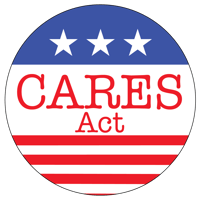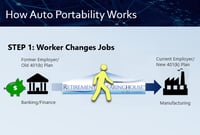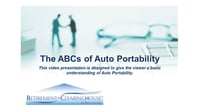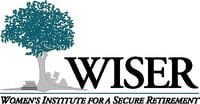Consolidation Corner
-
Blog
- 401k Cash Outs
- 401k Consolidation
- 401k Plan Termination
- America's Mobile Workforce
- Assisted Roll-in
- Auto Enrollment
- Auto Portability
- Auto Portability Simulation
- Automatic Roll-In
- Automatic Rollover
- Automatic Rollovers
- Boston Research Technologies
- CARES act
- Common Mistakes
- DIY Roll-In
- DOL Advisory Opinion
- EBRI
- Employee Benefit News
- ERISA Advisory Council
- Financial Services Roundtable
- Financial Wellness
- How-To
- In-Plan Consolidation
- Leakage
- Lifetime Plan Participation
- Lost Participants
- Managed Portability
- Mandatory Distributions
- MarketWatch
- Missing Participant IRA
- Missing Participants
- National Retirement Savings Cash Out Clock
- Participant Transition Management
- PLANSPONSOR
- Portability Services Network
- PSCA
- Public Policy
- RCH Services
- Retirement Income
- Retirement Plan Portability
- retirement research
- Retirement Savings Consolidation
- Retirement Savings Portability
- Roll-In
- Safe Harbor IRA
- Saver's Match
- Security
- Small Accounts
- Stale Dated Checks
- Synthetic Tenure
- Uncashed Check Services
- Uncashed Distribution Checks
- Video
- Webcast
- What is a Missing Participant?
Lifetime Plan Participation
Consolidation Corner Blog
Consolidation Corner is the Retirement Clearinghouse (RCH) blog, and features the latest articles and bylines from our executives, addressing important retirement savings portability topics.
Let’s Extend the Spirit of the CARES Act to Automatic Rollover IRAs
 America is a fundamentally caring country, as reflected in the collective actions of its individuals, businesses and policymakers. In the midst of the COVID-19 crisis, no policy reflects this caring spirit more than the aptly-named CARES Act, which, among other things, temporarily allows retirement savers hard-hit by the COVID-19 crisis to tap their qualified retirement savings while avoiding the punitive, 10% early-withdrawal penalty.
America is a fundamentally caring country, as reflected in the collective actions of its individuals, businesses and policymakers. In the midst of the COVID-19 crisis, no policy reflects this caring spirit more than the aptly-named CARES Act, which, among other things, temporarily allows retirement savers hard-hit by the COVID-19 crisis to tap their qualified retirement savings while avoiding the punitive, 10% early-withdrawal penalty.
How Does Auto Portability Work? Watch the Video.
 Looking for a quick primer on how auto portability works? Watch the video below, which walks you through the four-step process, including:
Looking for a quick primer on how auto portability works? Watch the video below, which walks you through the four-step process, including:
1. Worker changes jobs
2. Locate new worker's account
3. Match data
4. Savings follow worker
The Missing Piece in 401(k) Retirement Income: Consolidation

As Baby Boomers begin to retire in record numbers, they’re shifting their attention from saving for retirement to the process of decumulation, or converting their 401(k) savings into retirement income.
For many Boomers, their current-employer’s 401(k) plan wants to come to the rescue, offering them a dizzying array of retirement income solutions. Unfortunately, as these solutions begin to encounter reality, Boomers are finding that one simple, yet critical element is missing that prevents them from working as intended – the consolidation of their retirement savings.
401(k) Consolidation: What Every Plan Sponsor Should Know
Plan sponsors intuitively know that an explosion of small-balance 401(k) accounts held by terminated participants can create problems. Unfortunately, few sponsors are clear on the factors that give rise to small accounts, and fewer still understand how they can utilize consolidation programs to solve the problem.
The ABCs of Auto Portability
 What is Auto Portability? This video presentation is designed to give the viewer a basic understanding of Auto Portability.
What is Auto Portability? This video presentation is designed to give the viewer a basic understanding of Auto Portability.
Celebrating 20 Years of Being WISER!
 Retirement Clearinghouse and the RLJ Companies congratulate the Women’s Institute for a Secure Retirement (WISER) on their Twentieth Anniversary Celebration and HERO Awards Reception, taking place September 20th, 2016 at 101 Constitution Avenue, NW, Washington, DC.
Retirement Clearinghouse and the RLJ Companies congratulate the Women’s Institute for a Secure Retirement (WISER) on their Twentieth Anniversary Celebration and HERO Awards Reception, taking place September 20th, 2016 at 101 Constitution Avenue, NW, Washington, DC.
The ABCs of Roll-Ins
 With the advent of the Department of Labor's Fiduciary Rule, more employers are looking to promote lifetime plan participation and encourage participants to consolidate retirement assets in their current, active 401(k) plan. The plan feature to enable consolidation in the active 401(k) plan is the roll-in contribution. Retirement Clearinghouse is the recognized thought leader in roll-in facilitation. We have prepared this video - The ABCs of Roll-Ins -- as a resource for plan sponsors who are considering a formal roll-in program, as well as offering a roll-in facilitation service for their plan participants.
With the advent of the Department of Labor's Fiduciary Rule, more employers are looking to promote lifetime plan participation and encourage participants to consolidate retirement assets in their current, active 401(k) plan. The plan feature to enable consolidation in the active 401(k) plan is the roll-in contribution. Retirement Clearinghouse is the recognized thought leader in roll-in facilitation. We have prepared this video - The ABCs of Roll-Ins -- as a resource for plan sponsors who are considering a formal roll-in program, as well as offering a roll-in facilitation service for their plan participants.
Tales from the Roll-In Front Lines, Part I
 In previous articles, we’ve discussed the many benefits that occur when participants roll in multiple retirement savings accounts into their current employer’s 401(k) account. Participants benefit from reduced cash outs, lower investment fees and simplified retirement planning. A program of facilitated roll-ins delivers positive results for plans as well, including increased average balances, lower recordkeeping costs and improved retirement readiness metrics.
In previous articles, we’ve discussed the many benefits that occur when participants roll in multiple retirement savings accounts into their current employer’s 401(k) account. Participants benefit from reduced cash outs, lower investment fees and simplified retirement planning. A program of facilitated roll-ins delivers positive results for plans as well, including increased average balances, lower recordkeeping costs and improved retirement readiness metrics.
Four New Year’s Resolutions for Retirement Savers Summary
 In his 1/20/16 MarketWatch column (Four New Year’s Resolutions for Retirement Savers), Retirement Clearinghouse CEO Spencer Williams offers four New Year’s resolutions that all 2016 job-changers should take to heart, including:
In his 1/20/16 MarketWatch column (Four New Year’s Resolutions for Retirement Savers), Retirement Clearinghouse CEO Spencer Williams offers four New Year’s resolutions that all 2016 job-changers should take to heart, including:
Auto Enrollment: The Unintended Consequences, Part II
In his December 1, 2015 article (The unintended consequence of 401(k) auto-enrollment), RCH CEO Spencer Williams exposes the linkage between auto enrollment and lower average account balances. Based on Form 5500 data, Williams’ analysis presents some excellent examples of industries where average balances are significantly lower in plans that have adopted auto enrollment compared to plans that haven’t.
-
Blog
- 401k Cash Outs
- 401k Consolidation
- 401k Plan Termination
- America's Mobile Workforce
- Assisted Roll-in
- Auto Enrollment
- Auto Portability
- Auto Portability Simulation
- Automatic Roll-In
- Automatic Rollover
- Automatic Rollovers
- Boston Research Technologies
- CARES act
- Common Mistakes
- DIY Roll-In
- DOL Advisory Opinion
- EBRI
- Employee Benefit News
- ERISA Advisory Council
- Financial Services Roundtable
- Financial Wellness
- How-To
- In-Plan Consolidation
- Leakage
- Lifetime Plan Participation
- Lost Participants
- Managed Portability
- Mandatory Distributions
- MarketWatch
- Missing Participant IRA
- Missing Participants
- National Retirement Savings Cash Out Clock
- Participant Transition Management
- PLANSPONSOR
- Portability Services Network
- PSCA
- Public Policy
- RCH Services
- Retirement Income
- Retirement Plan Portability
- retirement research
- Retirement Savings Consolidation
- Retirement Savings Portability
- Roll-In
- Safe Harbor IRA
- Saver's Match
- Security
- Small Accounts
- Stale Dated Checks
- Synthetic Tenure
- Uncashed Check Services
- Uncashed Distribution Checks
- Video
- Webcast
- What is a Missing Participant?
